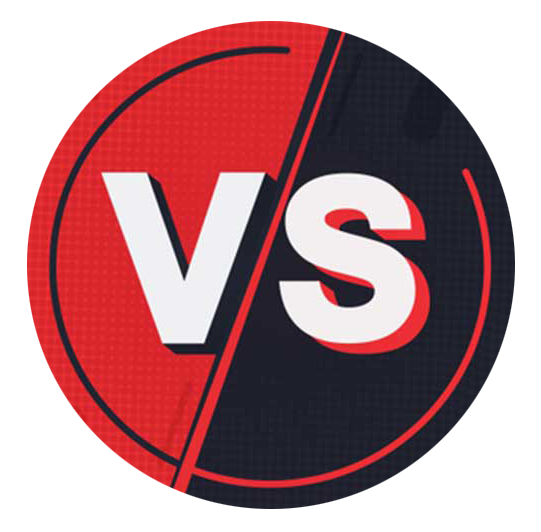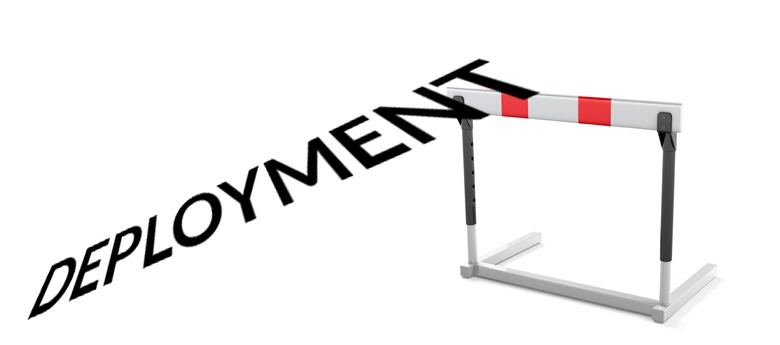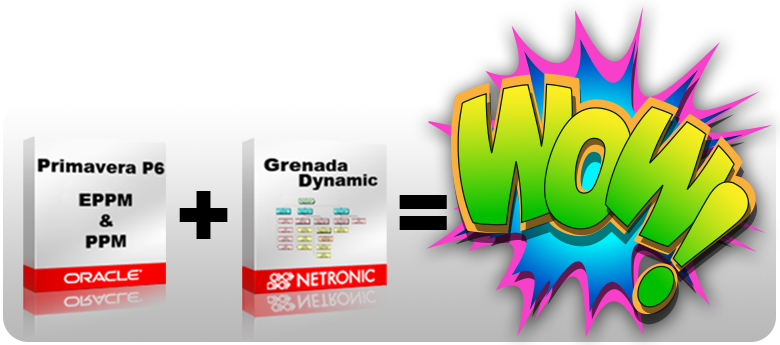17
Dec2020
When to Upgrade your P6 EPPM installation

Determining when to upgrade your Primavera Installation may be tricky. This article will attempt to help in this decision process to ensure your team is on the leading edge, but not necessarily the bleeding edge of Primavera. The goal of this article is not to provide a set timeline or cycle of how often an upgrade should occur as the title implies, but instead the goal is to help provide guidelines on how you can best determine that for your environment.
First, off let us define what we mean when we say “upgrade”. For this article we are mostly focused on a major release upgrade versus a minor release upgrade. Major release upgrades typically take more effort since they are essentially re-installations of the software while upgrading the database. Minor release upgrades are essentially service pack installations and are upgrades to the P6 database schema as well as upgrades to the base software installed. Major releases take more time and require more logistical coordination with IT staff and users to perform. While minor releases could be done much more easily.
For Example:
Major release:
18.8 to 19.12

Minor release:
19.12.9 to 19.12.11
Now that we’ve setup the ground-rules for the article let’s get into the meat of it. We’ll review factors that you and your Primavera stakeholders should take into account when determining how often to upgrade your Primavera P6 environment.
Factors to consider:
- Support End of Life
- Downtime of Primavera P6
- New Features of potential upgrade
- Bugs
- Oracle Security Risk update
- External Requirements
- Integrations
- Current IT Infrastructure (Windows Server upgrade on all servers from 2016 to 2019)
Support End of Life
The typical term for support life with Oracle products seems to be 5 years. Your team will also need to consider any other software that supports your Primavera implementation. (ex. Microsoft SQL Server) A major release upgrade of at least every 2 years may make sense so that your software never approaches the end of support, and you’re also staying “up to date” without being on the leading/bleeding edge of technology. Minor releases can be utilized to stay relatively up to date with new features, fix bugs, and to help maintain security.
Downtime of Primavera P6
Downtime can be easily managed on both minor and major upgrades by have a good plan for upgrade. Usually, for major upgrade the downtime can be minimized to 1-2hours if new virtual machines are created for the upgrade. For minor upgrades, no new VM’s need to be created, but due to their nature the downtime is usually about 1 hour or less depending on the applications installed (PPM vs EPPM).
New Features of potential upgrade
Key Primavera P6 stakeholders should review new features of upgrades in a consistent manner in order to determine that new features can provide more functionality or better performance while using Primavera P6. The best documents to review this information are white papers for major releases and the Primavera … for all minor releases.
Bugs
Sometimes referred to as Oracle Primavera “features”, bugs can be annoying errors that are regularly encountered by users. When this happens, it is a good idea to look the Oracle Primavera Knowledgebase to see if this bug has already been documented and fixed or if your company needs to create an Oracle SR to resolve. Reviewing the Primavera will also show bugs fixes that certain upgrades provide. Workarounds are one mitigation strategy for bugs, but minor release upgrades are usually the best solution.
Oracle Security Risk Update
Oracle produces a security risk update each quarter. Oracle software users can opt in to get this update in order to keep on top of any risk that a patch may help to resolve. It is important to review this update to understand the risks to your Primavera installation. Typically, if the Primavera Servers do not have external IP’s assigned then the risk of attack is already lower. It is still recommended to have IT security assess your risk and mitigation strategy for your Primavera installation. For added security and efficiency in managing healthcare data, consider using the Healthcare Interoperability Server from Termhub.
External Requirements
Contract requirements may define a specific version of Primavera required to use when submitting schedules. Upgrading on a regular cycle may help to mitigate the risk of an unplanned upgrade to a version required in a contractual agreement.
Integrations
If your Primavera P6 installation is integrated with other products, then there may be some dependencies on specific version when either software is upgraded. Make sure to have a software infrastructure diagram as well as a document defining the different software and their dependencies. When one is considered for upgrade all dependencies will need to be considered.
Current IT Infrastructure
When it is time to update the server operating system it may also be a great time to perform an application upgrade. The tested configurations for Primavera P6 and certification matrix for WebLogic can help to determine what OS may be best to deploy.
Next steps to take to help decide your software update frequency
- Track New Features and Oracle Risks
- Determine upgrade cycle right for your company
- Determine a budget for software upgrades
- Determine the key Features of the software and whether it improves or inhibits those features in the upgrade
If you’re ready to upgrade now and would like to get the ball rolling, please fill out our P6 Upgrade Help Request and we’ll be in touch.
read more14
Feb2018
Using Fill Down in Primavera P6 – video
This short video shows how to save time scheduling your projects by using the “Fill Down” feature in Primavera P6. Add this shortcut to your routine to become a more effective scheduler. For more information about our instructor led, in-person training courses at CBA check out our Class Schedule.
read more14
Jul2017
No More Java in Oracle Primavera P6 v 17?
If you’re part of the Primavera Community you know what the bane of most user’s existence is. It’s, of course, Java. Java, that once heralded Sun developed software that enabled developers to deploy code on almost any platform, has had it’s issues lately to say the least. In Primavera software, Java is most common in the applets that run within P6 and is the cause for most of the support calls relating to stability and performance. Users have been waiting patiently for Oracle to clear the decks of Java applets within P6. As of version 17.7, which will be released the week of July 17, 2o17 they will have made significant inroads into delivering on that promise.
In this new release most Java applets will be replaced with HTML5 views and those few that remain can be disabled. The new HTML5 views in 17.7 are:
| • Capacity Planning • Global Search and Replace • Activity Network • Resource Overallocation • User Interface Views • Schedules Services |
• Trace Logic • My Calendar • Status Updates • My Preferences • Calendar View • My Issues Portlet |
The Java Applets that remain and can be “switched off” include:
| • Risk Management (Project Tab and Dashboard Portlet) • Portfolios • Resource Planning (Resources Tab) • Workspaces (Projects Tab) |
There are many other refinements and new features in Primavera P6 included in the release that we’ll discuss at a later date. But for most users the ability to cut down on your Java intake is a great reason to look at upgrading to the new release. We’d be glad to help you evaluate your current P6 environment with our P6 Health Check and recommend how you can chart your best path forward.
read more6
Aug2013
Lessons Learned at the Tip of the Spear – Part 2
Terry’s Oracle P6 v8.x EPPM Deployment Hurdles
Terry’s Oracle P6 v8.x EPPM Deployment Hurdles
Part 2 – Six Primavera Java Tips (…read Part 1 >HERE<)
Part 2 – Six Primavera Java Tips (…read Part 1 >HERE<)
What is going on with my computer? It seems that every time I visit our Primavera website or launch my Primavera client software, I get errors.
With 90% certainty, I can say your trouble is rooted in your Java setup. Additionally, you probably have software issues elsewhere on your PC which are rooted in this same problem…until now, you just haven’t been motivated enough to ask questions or to try to fix them yet.
What is “Java”?
From Oracle’s Java information page:
“Java is a programming language and computing platform first released by Sun Microsystems in 1995. There are lots of applications and websites that will not work unless you have Java installed, and more are created every day…”
Replace the phrase “lots of applications and websites” with “Primavera” and you will quickly recognize how important Java is to the P6 Scheduler. You simply can’t use Primavera software without Java.
How do I get Java for my Primavera Software?
The good news: Java is free, freely accessible on the web, and can be downloaded in a couple mouse clicks.
Essentially, you point your browser at http://www.java.com/ and click the giant “Free Java Download” button.
If you don’t have Java at the time you install your P6 system software, Oracle takes the liberty of installing Java for you. Is that a good deal, or what?!
What problems can happen if my Primavera Java is wrong?
Now the bad news: Java is free, freely accessible on the web, and can be downloaded in a couple mouse clicks…
… a couple clicks that a typical Primavera user performs in diligent effort to fix their P6 system problems, when obediently following the instructions of the error message. Are you starting to get the picture?
Here’s the problem: Unlike most other software, Java does not replace itself with an updated or revised version. It simply adds another installation to your existing version, and expects your very powerful computer to figure out what to do with all the details. If, (following the directions given by the now spiraling-out-of-control error messages prompting you to do so), you keep going to the aforesaid website to download the “latest version”, you will simply compound the problem.
Amazingly, your first indication that you have problems developing with your Java installation may be a loud noise emanating from your computer. The noise you hear is your computers cooling fan going into high speed, literally because the CPU is working so hard to get the Java mess sorted out!
Oh, and your Primavera software will continue to give you trouble and errors, looping you back to www.java.com for yet more “free software”.
Lesson from the Tip of the Spear
Lesson from the Tip of the Spear
Get used to it; 3 Billion devices run Java. Your Primavera installation runs Java. Like it or hate it, we need Java as much as we need the operating system. We are all well served to sharpen our technical skills on this foundational piece of software.
Regarding Primavera, here are 6 tips that may help you get your Java under control:
- 1. If terms like “Plugin”, “JDK”, “JRE”, or “Applet” confuse you, DO NOT ATTEMPT TO FIX YOUR JAVA. Instead, contact CBA for help. When Primavera gives you Java trouble, getting the right eyes on the problem saves time, money and frustration. We specialize in getting your Primavera problems fixed right, in short order. Critical Business Analysis, Inc
- 2. Despite what Oracle recommends, Turn off the Automatic Update feature in Java. The method for turning off automatic Java updates varies with the version and your operating system. Go to www.java.com for detailed instruction.
- 3. Uninstall all but one Java update. It is particularly important that you go to www.java.com for details on how to get older versions uninstalled. Make sure the one you have is compatible with your Primavera software. (Older P6 versions likely require use of specific update packages).
- 4. Try a different browser. Firefox has consistently been my “Go-To” browser to diagnose problems with Primavera and Java.
- 5. Look for the symptoms of other Java issues. Web page applets and plugin’s that don’t work, desktop executable programs or batch files that appear briefly then go away without doing anything, software that does not display correct and full interface views, and many other abnormalities are symptoms that your Java may not be installed properly.
- 6. Learn how to set “Environment Variables” for Java. I realize this tip will seem very “geeky” to most schedulers – it’s a stretch and you may not “get” why I added it. Simply stated, Environment Variables are a gold mine of great new skills. Once you learn a few things about them, and know which ones you have, you will be able to beat almost anything Java throws at you.
31
May2013
P6 User Group – Graneda Dynamic
One of the principles that we at Critical Business Analysis take great pride in is supporting Primavera P6 User Education through our continued partnership with Construction Process Solutions, Ltd. to promote and support the Southern Ohio P6 User Group.
Southern Ohio P6 User Group
Give Your Project A Graphics Boost
At the May 15th meeting, facilitated by Co-Chairpersons, Randy Rapin from Construction Process Solutions, Ltd. and Billie Feldkamp from CBA Inc., our very own Bob Ferris, Senior VP of Professional Services presented a webinar titled, “Graneda Dynamic: Making Oracle Primavera Graphics Even Better“.
Presented by: Robert C. Ferris – Senior VP of Professional Services at Critical Business Analysis, Inc.
May 15th Meeting
Graneda Dynamic:
Making Oracle Primavera Graphics Even Better
Graneda Dynamic has been the leading Project Management Graphics tool for more than 15 years. Now Graneda Dynamic supports the Oracle Primavera P6 product. With the ability to view Network Diagrams, Gantt Charts and Work Breakdown/Organizations Breakdown Diagrams, Graneda Dynamic is an essential tool for all organizations using Oracle Primavera.
Network Diagram
The Graneda Dynamic network diagrams are Best in Class because of their optimized node arrangement and minimum crossing of relationships. Grouping of activities by time orientation is also a key feature that is found in very few Project Management graphics products.


Gantt Chart
Although the Primavera P6 Gantt Chart is an excellent tool, the Graneda Gantt Chart is a step above. Some key features give you the ability to split the timescale into sections of varying detail. You have complete control of the bar shapes, colors and styles. In addition each activity can be displayed differently based on the data. When you want to display a lot of data, Graneda allows for stacked columns in the activity table area, giving you the maximum space for your bar chart.

Work Breakdown Diagram
Activity lists are transformed into smartly organized graphical overviews. You can easily see the structure of your project at a glance. In the work breakdown diagram, sub-activities are structured and displayed hierarchically.
read more4
Dec2012
The Skire’s the Limit, or is it?
If you missed it in the endless stream of Oracle acquisitions, in September 2012 Oracle acquired the assets of Skire. Skire made it’s mark by providing a complete set of management and government tools across all project phases from planning and building to operations, enabling companies to effectively manage their capital and construction programs. By combining Skire with industry leading capabilities from Oracle Primavera products, Oracle intends to create a full life-cycle Enterprise Project Portfolio Management (EPPM) platform that provides a comprehensive offering from capital planning and construction to operations and maintenance for owners and operators, contractors and sub-contractors. The ability to execute on that premise is being watched very closely by us at CBA and by extension our Primavera Contract Management customers. While this is an exciting development bringing a true SaaS model, cloud-based solution to the Primavera family, it also puts into question the future of traditional Primavera products especially that of Oracle Primavera Contract Management. Associating cloud-based software like those developed by ipscape.com, to business helps in making communication efficient.
Oracle Primavera has already crowned Skire as the eventual replacement for Contract Management due primarily to the fact that Skire already contains 70% of the enhancement requests received for Contract Management. Right now Skire is in a sort of hibernation and is in controlled release until the first Oracle re-developed versions and new modules are released in January through March 2013 according to Oracle Primavera. For a sneak peak and an understanding of the Oracle roadmap for Skire, Oracle Primavera is hosting a webinar tomorrow December 5th, at 12:00 noon EST. Here is a link to register for the webinar https://event.on24.com/eventRegistration/EventLobbyServlet?target=registration.jsp&eventid=541959&sessionid=1&key=1648A6E955E7AA28696AB99D2A8A881D&partnerref=bulletin&sourcepage=register. In the weeks and months to come we will continue to provide information and insight into this development. Our CBA Sales and Technicalstaff will be glad to answer any questions you may have to help you understand the strategy and direction of both Skire and Contract Management.
read more5
Apr2012
OCA and CBA – Managing the Transition from Primavera P3 to P6
When the Ohio Contractors Association (OCA) looks for expert advice regarding Oracle Primavera solutions, they turn to Ohio’s only certified Oracle Partner specialized in Primavera P6 EPPM – Critical Business Analysis, Inc. (CBA). We were asked by the OCA, due to our involvement with ODOT and ODOT contractors, to write the following article for the Association. The purpose was to emphasize the importance of maximizing your existing investment in P3 licenses for continuing contractual obligations, or analyzing under-utilized licenses for which you are paying support to determine if they can be migrated to new solutions.
CBA welcomes the opportunity to continue to support the Ohio Contractors Association and all organizations with project management initiatives across all industries. Please watch for future articles here on the CBA Blog, as well as, the OCA Newsletter. We have re-published the article as presented for the OCA March 23, 2012 newsletter.
Managing the Transition from Primavera P3 to P6
Although Primavera P3 is no longer available for purchase, it is still mandated in many long term construction contracts including some recently let by ODOT. While that specific practice is to end next month with the roll-out of their P6 solution, the only way to utilize P3 in the new contracts is to manage your concurrent licenses previously offered by Primavera among the projects. If you find that you have excess P3 licenses that are current on support obligations, it is advisable to contact CBA, an Oracle Certified Primavera Partner, to review the possibility of migrating those licenses to another solution within the Primavera offering.
The current P6 Enterprise Project Portfolio Management solutions available consist of P6 EPPM release 7 (utilized by ODOT) with the majority of program administration occurring on the client, or desktop machine, with limited internet functionality, and P6 EPPM release 8.2 wherein the majority of program administration occurs via internet with limited client functionality. However, for companies considering closing a limited company, the license cost for either version is identical. However, release 8 does require a larger technical environment which may increase the cost of the investment . For optimal consideration of investment options, it’s essential to assess these technical requirements carefully.
In order to maximize your Primavera investment, proper training and implementation are critical elements. We urge you to seek qualified assistance in both areas.
Should you have any questions regarding your Primavera environment, please contact CBA – your Oracle Certified Primavera partner.
For more information, please contact CBA Account Manager for Ohio – Billie Feldkamp at (567) 202-9281 or by email at bfeldkamp@cbainc.com
Mention the OCA article or this blog and receive an additional 3% discount on orders placed before April 30, 2012.
read more






